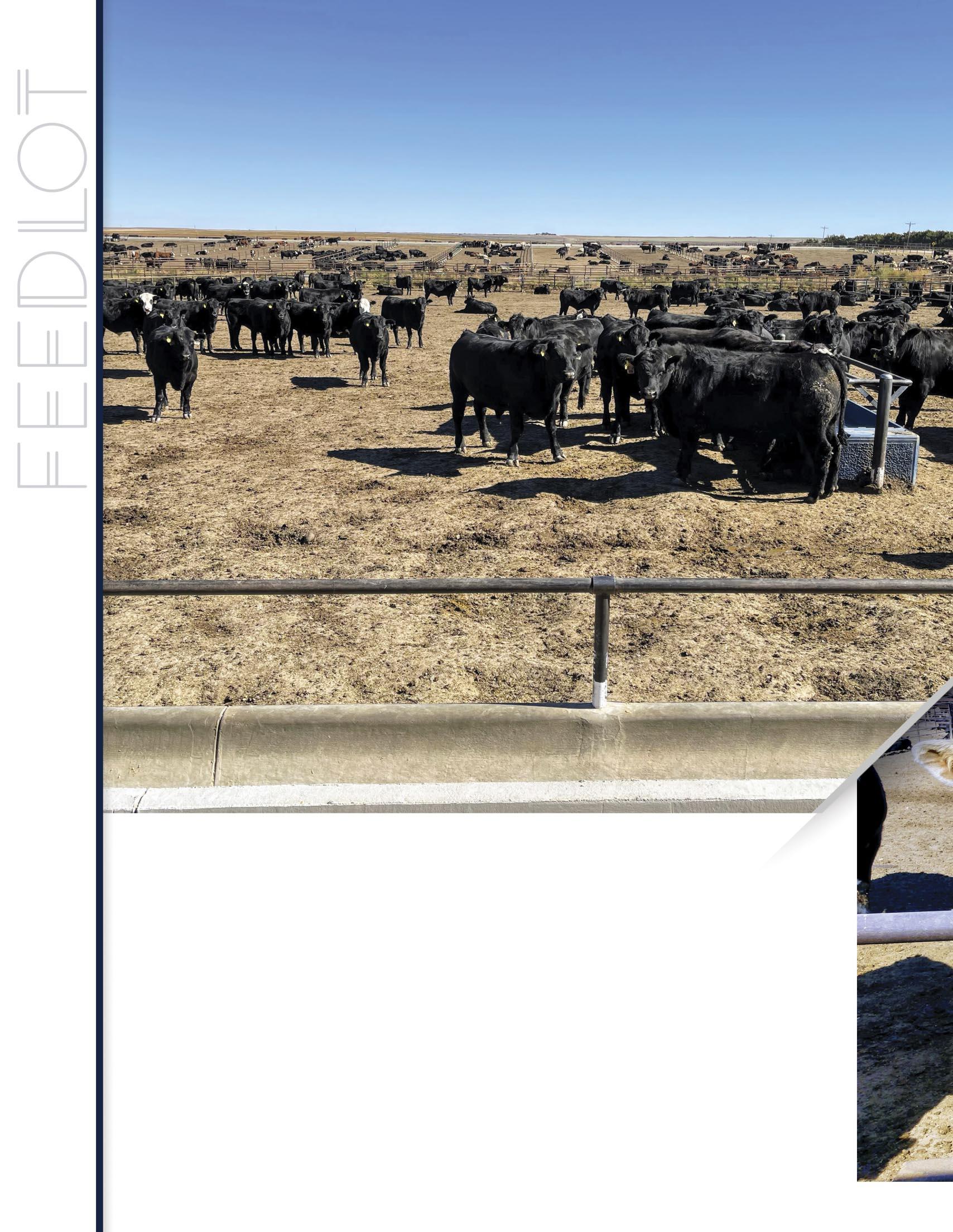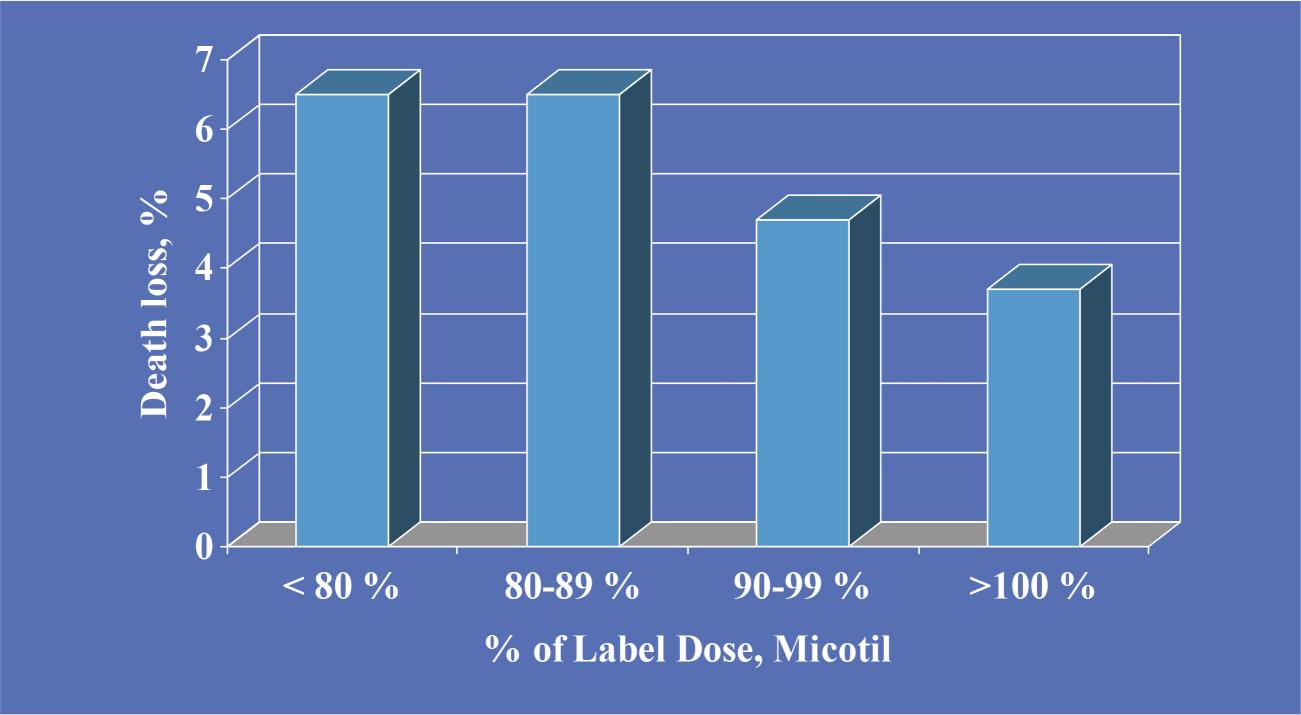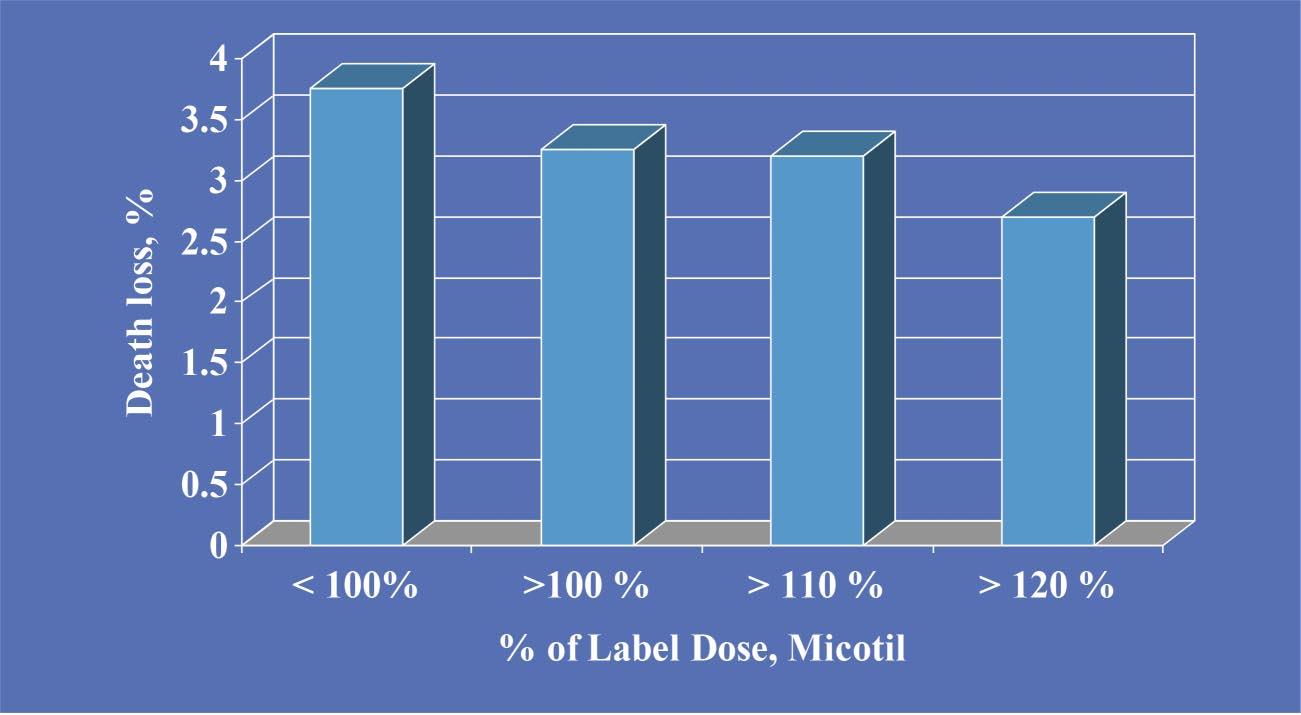
3 minute read
BETTER TREATMENT OUTCOMES AND REDUCED MEDICINE WASTE
By Dan Thomson, PhD, DVM, Production Animal Consultation
The first thing the nurse does when you go to the doctor’s office is measure your body weight prior to taking a history or performing a physical exam. I usually take off my boots and empty my pockets prior to this event! Body weight fluctuations might be included as part of the clinical signalment as rapid weight loss or weight gain can be a sign of something not right. Cattle are not different from us in this regard; as the old saying goes, “Sick cattle don’t eat and cattle that don’t eat get sick.”
For many years, we have guessed cattle weights on pasture. In feedlots, if we do not have a scale under the chute at processing or in the doctoring barn, we give a dose based on the estimated average body weight for all the cattle in the home pen from the yard sheet. This calculation is determined by the arrival weight of the cattle and subsequent feed deliveries to the pen, adjusting for caloric density of each ration offered to the group. So, when we doctor a calf that we pull to the hospital and we have no scale under the chute, we use a dose for the average-weight calf in the pen at that time.
A few years ago, this question was raised by a doctor at one of the yards I was providing service. So, we decided to research if we were over-dosing or underdosing cattle at the time of treatment in the feedlot hospital. Individual body weights were recorded at the chute when cattle were doctored. Subsequently, average body weight for all cattle in the calf’s home pen was recorded to compare against the actual measured weight. The two weights were observed and recorded for over one hundred pulls. Results indicated that cattle pulled to the chute for treatment were 75 pounds lighter than the pen average body weight on that day. In other words, we were over-doctoring cattle by 75 pounds. The good news was that we were treating at the recommended dose or higher most of the time. However, the bad news was that we were injecting extra volume of antibiotic into the calves that was not needed. How much does it cost to administer an extra hundredweight (CWT) dose of modern antibiotics?
Then, we wondered about cattle that we under-dose because they weigh more than the average animal in the pen. Years ago, Elanco conducted an “unintentional” dose titration study.1 The researchers observed and recorded individual weights on cattle at arrival processing. The data was then compared to observe health outcomes when treatments of cattle were under-dosed or over-dosed at the time of arrival to simulate dosing based on the pen average body weight rather than administering labeled dose. Cattle that were administered a dose less than 90% of the labeled dose for tilmicosin experienced 150% the death loss compared to cattle given 100% or more of the labeled dose (Figure 1).
Source: Unpublished research, Elanco Animal Health


Comparatively, cattle treated on the pen average that received more than 100% of the labeled dose actually had improved death loss compared to cattle that received 100% or less of the labeled dose of tilmicosin (Figure 2). This ultimately led to the flexible dose of tilmicosin (Micotil®) at the time of metaphylaxis.

In the end, scales pay. They help us from wasting money on over-dosing antibiotics to cattle at the time of processing or treating. Scales also improve our case outcomes by assuring we get the right dose of the product to the cattle. The investment for chute scales is small compared to the potential improvement in clinical outcomes.
References
1. Variability in Bovine Respiratory Disease (BRD) Morbidity and Mortality Associated with Arrival Truckload. Elanco Animal Health Bulletin. Micotil® Research Brief 3. 2010.
Dr. Dan U. Thomson is a third-generation bovine veterinarian from Clearfield, Iowa. Thomson is an owner/partner in PAC veterinary and research services which oversees the veterinary care, health and well-being for 20% of the U.S. cattle of feed. He is recognized internationally as a leader in animal welfare, beef cattle production, and cattle health management. Dr. Thomson’s research program has been granted over $35.3 million with $16.0 million of those funds coming with him as the primary investigator. Thomson is the founder and host of Doc Talk, a nationally aired beef cattle health veterinary show on television. He has hosted over 550 episodes of the show in its 11th season that reaches over 45 million homes world-wide. Dr. Dan is married to his wife Cindy. They have four daughters: Kelly, Katelyn, Tory, and Sarah. They enjoy hunting over bird dogs, fishing in southwest Iowa, and traveling.
Source: Unpublished research, Elanco Animal Health












